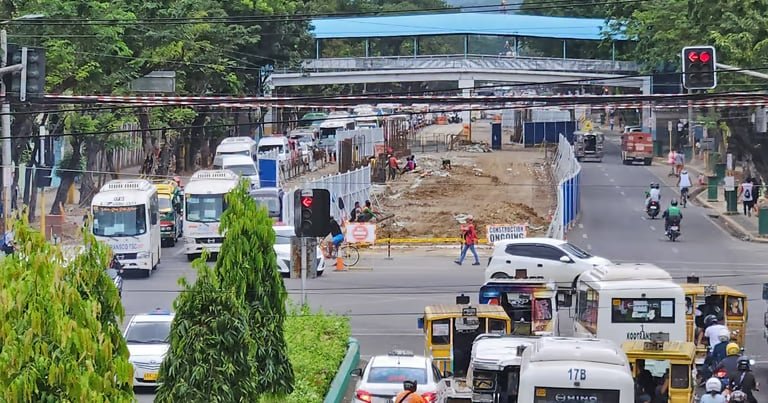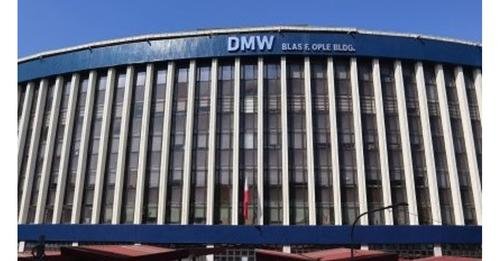THE Cebu Bus Rapid Transit (CBRT) project should be stopped.
This was what Cebu City Councilor Jocelyn Pesquera said after Councilor James Anthony Cuenco, committee on transportation chairman, enumerated the lapses and issues surrounding the project, including its delayed implementation, increasing cost, and its poor planning and design.
“Though he did not really categorically say to stop the BRT project, but it’s really, I would really push for the council to take a stand and stop the CBRT project,” said Pesquera during the regular session on Wednesday, Jan. 10, 2024.
Pesquera said she was against the BRT from the start, especially when she learned that similar projects in other countries like the one in Curitiba, Brazil or the one in Aminabad, India were not successful in fully addressing the traffic and transportation problem.

She also compared the project cost to the City taking out a P12.315 billion yen loan from the Japan International Cooperation Agency in 1995 to develop the reclamation project or to the construction of the Cebu-Cordova Link Expressway, which cost P35 billion.
Cuenco, in a privilege speech, urged the City Council “to consider redirecting the efforts and resources towards finding more viable traffic solutions,” saying the BRT project is “manifesting the symptoms of the failed BRT systems in Hanoi, Vietnam; Bangkok, Thailand; and Delhi, India.
Reevaluation
Cuenco highlighted the prolonged traffic gridlock caused by the BRT construction, leading to scrutiny from residents, commuters and businesses.
He called for a reassessment of the project’s viability, emphasizing the need for alternative traffic solutions to address transportation challenges.
He urged a reevaluation of the 1996 edition of the BRT system.
Drawing comparisons with failed BRT systems in Hanoi, Bangkok and Delhi, Cuenco pointed out key similarities contributing to their failures.
He pointed out the prolonged implementation period since the project was first proposed in 1996, emphasizing that such delays can adversely impact the BRT’s effectiveness.
Cuenco also raised concerns about the BRT’s proposed road length and width, citing flaws in the current design.
“The addition of BRT lanes would mean less space for those driving private vehicles, delivery trucks and motorcycles,” he said, echoing challenges faced by other countries.
“First, the Hanoi BRT system was installed on narrow roads, operating only a mere 14 kilometers, similar to our 13.8-kilometer BRT Packages 1 & 2. Second, the exclusive BRT lane was frequently encroached on by private vehicles; and third, riding private vehicles remained the popular choice,” Cuenco said.
Cuenco highlighted issues related to poor planning, lack of public consultation, and bureaucratic challenges, emphasizing the potential risks of a failed BRT project in Cebu City.
“The design of the Cebu BRT has undergone numerous changes, yet appears to be inadequate, evident in the piecemeal solutions we currently face. We cannot even decide on a simple matter like what to do with the two skywalks impeding the ongoing construction when this issue should have already been dealt with way before construction work began,” he said.
“Why wait until 2027 or beyond to check if it is a failure when the circumstances are already too similar to the cities that were unsuccessful with their BRT systems? And by the way, have the project planners already determined how much fare they would charge to ride on these buses that are designed to be ‘rapid’ or punctual? Will it be enough to recover the project cost that has ballooned to over P28 billion from the initial P16.8 billion estimated cost and projecting inflation at a conservative five percent per annum? And can a minimum wage earner afford the fare?” he said.
Alternatives
Cuenco urged fellow councilors to reconsider the trajectory of the BRT project.
He proposed exploring projects like the Guadalupe to Lahug bypass road and considering innovative alternatives such as a coastal monorail system and a Cebu MRT (mass rapid transit) subway system.
Cuenco concluded by opting to forgo the usual motions at the end of a privilege speech, giving his colleagues time to reflect on imminent decisions related to the BRT project.
City Councilor Pesquera echoed Cuenco’s sentiments.
She pointed out that the BRT system in Curitiba, Brazil, which inspired the Cebu BRT, succeeded for a specific period but later ceased to address transportation issues.
Meanwhile, City Councilor Mary Ann de los Santos asked whether the data (for the implementation of the BRT project) collected 21 years ago was still applicable to today’s situation.
Cuenco said the data was taken more than 20 years ago when the volume of vehicles on the roads was much lower compared to present conditions.
City Councilor Nestor Archival Sr. raised a corollary motion, inviting representatives of the National Economic and Development Authority, World Bank, and Department of Transportation (DOTr) to an executive session on Feb. 7.
Archival said the session aims to update the City Council on the final BRT route, pending approval by Neda; the total amount currently deposited in the Philippine bank; and the accrued interest cost of the ongoing project.










